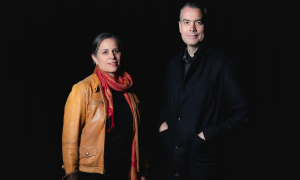Yma Sumac, the Peruvian-born singer whose spectacular multi-octave vocal range and exotic persona made her an international sensation in the 1950s, has died. She was 86.
Sumac, who was diagnosed with colon cancer in February, died Saturday in an assisted-living facility in Silver Lake, said Damon Devine, her personal assistant and close friend.
Bursting onto the U.S. music scene after signing with Capitol Records in 1950, the raven-haired Sumac was known as the “Nightingale of the Andes," the “Peruvian Songbird" and a “singing marvel" with a 4 1/2 -octave (she said five-octave) voice.
“She is five singers in one," boasted her then-husband Moises Vivanco, a composer-arranger, in a 1951 interview with the Associated Press. “Never in 2,000 years has there been another voice like hers."
After Sumac performed at the Shrine Auditorium with a company of dancers, drummers and musicians in 1955, a Los Angeles Times writer observed: “She warbles like a bird in the uppermost regions, hoots like an owl in the lowest registers, produces bell-like coloratura passages one minute, and exotic, dusky contralto tones the next."
Sumac's first album for Capitol, “Voice of the Xtabay," soared to the top of the record charts. A handful of other albums followed during the 1950s. With her exotic beauty, elaborate costumes and singing voice that could imitate the cries of birds and wild animals, the woman who claimed to be a descendant of an ancient Incan emperor offered Eisenhower-era audiences something unique.
During her 1950s heyday, Sumac sang at the Hollywood Bowl, Carnegie Hall and Royal Albert Hall. She reportedly made $25,000 a week in Las Vegas.
She was featured in the 1951 Broadway musical “Flahooley" and appeared in the films “Secret of the Incas" in 1954 and “Omar Khayyam" in 1957.
Yma Sumac Peruvian Songbird Silenced
Yma Sumac, 'Peruvian songbird' with multi-octave range, dies at 86 The singer with a persona matching her exotic voice became an international sensation in the 1950s.




























